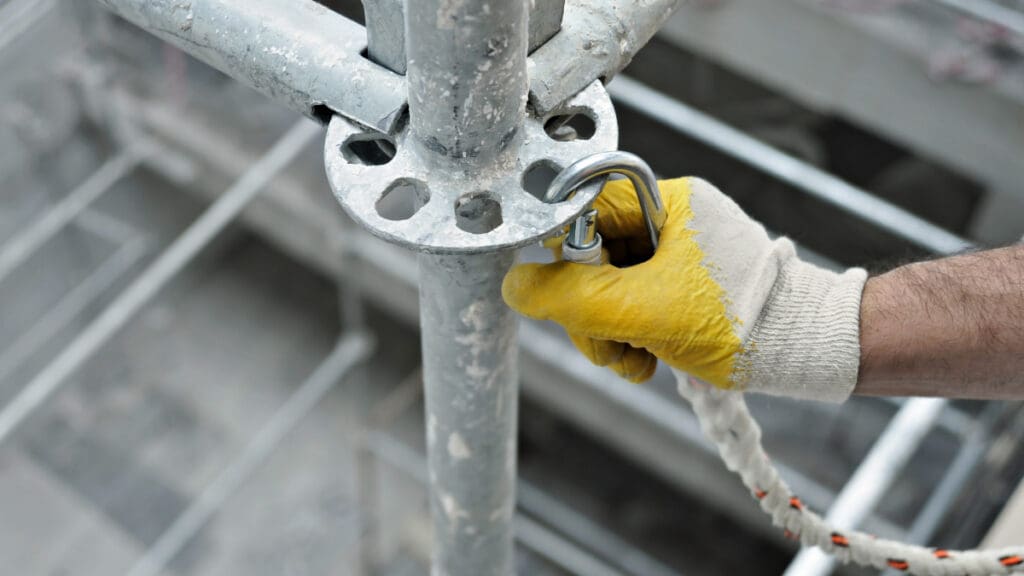3 Easy Ways To Stay Ahead of Scaffolding Regulations
Scaffolding regulations are constantly changing, here are three ways you can use that to your advantage. Read More

Do you know that more than 100 construction workers die from scaffolding accidents each week? That’s about 15 deaths every day.
Scaffolding is not just a source of income, but a passion for many of us. To ensure our continued safety, we need to reflect on our dangerous practices and heighten the existing safety standards.
On that note, here are five common mistakes in scaffolding projects and ways to avoid them.
One of the biggest scaffolding mistakes is not identifying construction risks during the planning stage. Hazards such as unstable equipment, risk of collapses, electrocution, and dangerous environmental conditions such as slopes, toxic gasses, or harsh rain should be evaluated and addressed early on. Failure to do so exposes workers to these dangers and even decreases project efficiency as they need to adapt to the situation once construction has already begun.
Avoiding this is simple–create a more strategic and detailed design with a sound Method Statement and Risk Assessment. In this regard, high-tech design software like Avontus Designer can help designers identify pitfalls in their planning that might otherwise be overlooked. This will ensure the safest possible structure and environment to work with.
Besides overlooking safety hazards, another common mistake during the planning and construction stage is not adhering to the relevant country guidelines which provide in-depth guidelines for each type of scaffolding along with general safety standards to ensure optimum protection for workers. Ignoring these instructions not only violates construction safety laws, but poses dangerous risks for the scaffolders and surrounding community.
The only way to avoid this is to double check scaffolding plans and oversee the project properly so that everything complies with the regulations.
Inaccuracies in scaffold structures range from incorrect attachment points, overloading the structure, using the wrong parts, or just failing to follow the initial scaffold plan. This is a highly dangerous mistake because the structure can become unstable, increasing the probability of a collapse.
It’s easy for this to happen because scaffolding designs can be very complex and human errors are simply inevitable. However, we can avoid mistakes with clear, easy-to-understand designs. Communicating scaffolding plans clearly to every team member before construction can also lead to more precise execution.
It’s important for workers to never compromise quality over cost or time. Using old, excess materials in the yard or renting cheap tools might be tempting when you’re overbudget and behind schedule, but it could greatly jeopardize project safety. Sub-par materials lead to weak structures and can cause collapses or falls if the working plank gives way while in use.
To avoid this, scaffolders should track their inventory efficiently and document every defect. This ensures that no materials are rusting away in the yard. Proper planning is also crucial so that you don’t reach for lesser alternatives when you make last-minute changes.
Another common scaffolding mistake is commencing the construction with unprepared workers. This happens when there’s a lack of training and briefing for the team, as well as when you have to hire ad-hoc workers mid-project. Unprepared workers are more likely to make mistakes and endanger themselves and their team members during work.
It’s the employer’s job to avoid this. They must always provide their crew members with the proper safety training and project briefing so that they are well-prepared. They must also plan carefully to ensure fewer project changes are made at the last minute.
Scaffolding is a hazardous business, but it doesn’t have to be. There are many ways to reduce on-site accidents. But as humans, it can be daunting to constantly monitor each potential danger. This is where technology comes in handy.
With software programs built especially for scaffolding, you get to detect hazards in your planning, monitor every piece of equipment in your inventory, maintain clear communication between stakeholders, and eliminate overall mistakes from your project. Avontus Software can help you achieve all of that and more.
Ready to transform your next scaffolding project? Click the button below learn more.